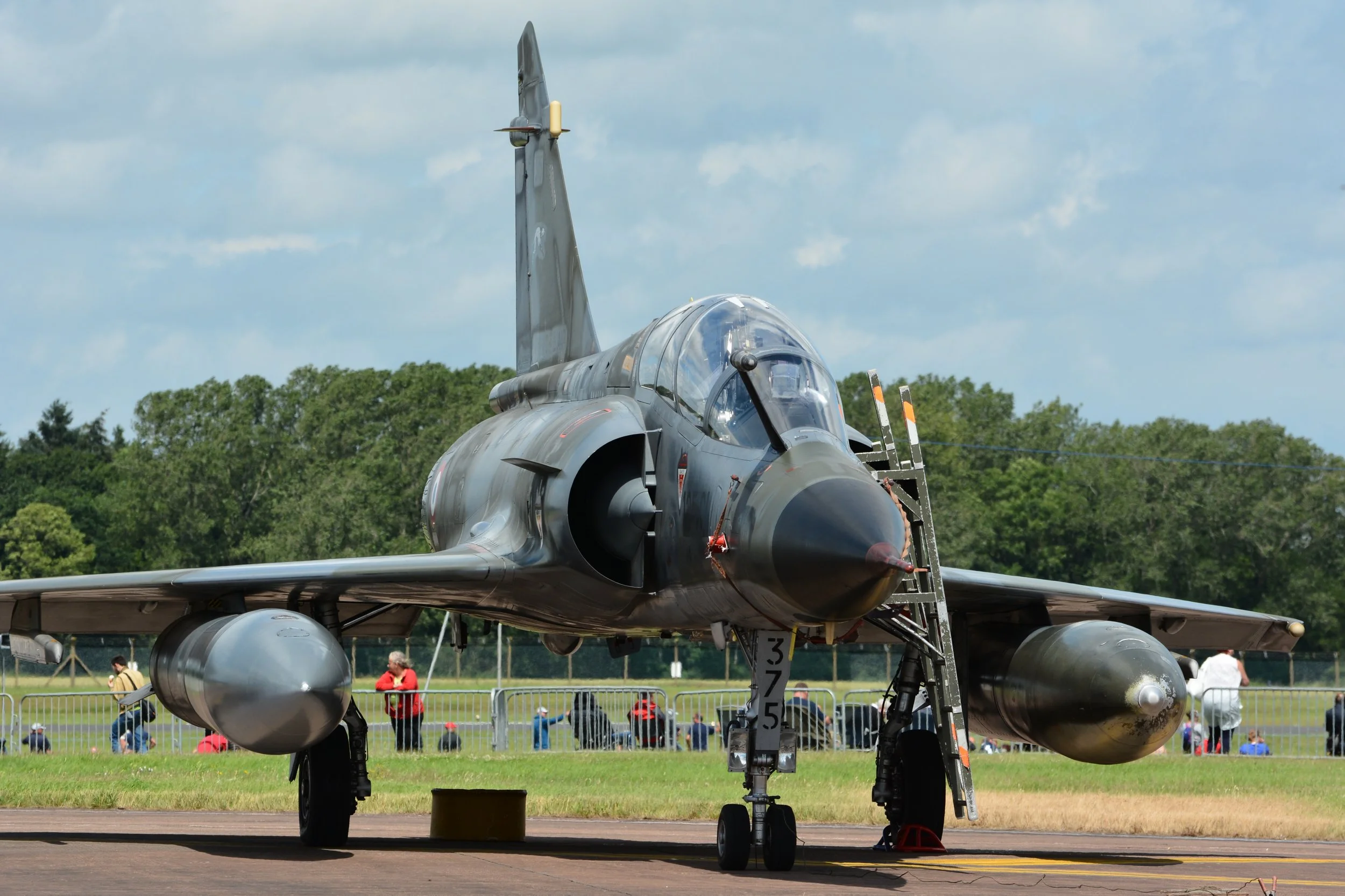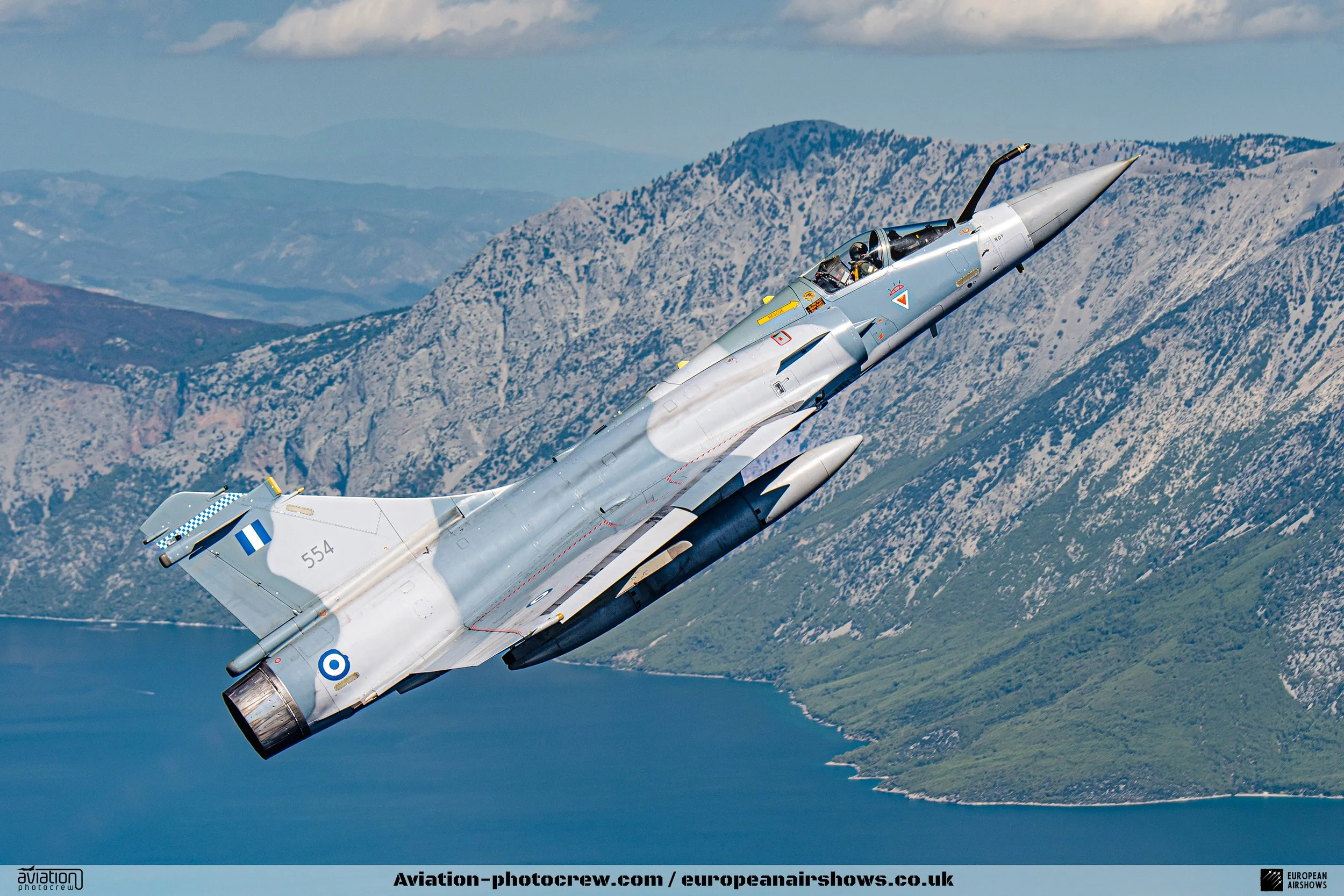
March 10 / Mirage 2000 first flight
First flight 10 March 1978
Dassault Mirage 2000
The Mirage 2000, a sleek and spirited creation from the French aerospace wizards at Dassault Aviation, burst onto the scene as a multirole, single-engine fourth-generation jet fighter that could do just about anything the skies demanded. Born in the late 1970s, this agile marvel was crafted as a lightweight successor to the beloved Mirage III, a stalwart of the French Air Force since the swinging sixties. What started as a nimble interceptor soon morphed into a versatile aerial ace, with variants spreading their wings across air forces worldwide. With its dazzling agility, cutting-edge avionics, and a knack for shining in combat, the Mirage 2000 carved out a reputation as a jet that could dance through the clouds and deliver a punch when it counted.
The tale of the Mirage 2000 kicked off in the early 1970s, when Dassault set out to build a fighter that could hold its own against the flashy new toys coming out of American and Soviet hangars. The Mirage III had been a hit—affordable, reliable, and a dream to fly—but the world was moving fast, and France needed something fresh. In 1975, the project got the green light, and by March 10, 1978, the first prototype roared into the sky. The design was a stunner: a delta wing that gave it the grace of a bird and the speed of a bullet, paired with a revolutionary fly-by-wire system that made it respond to a pilot’s touch like a finely tuned instrument. This wasn’t just a plane; it was a leap into the future, blending elegance with raw power.
By 1984, the Mirage 2000 was strutting its stuff in the French Air Force, ready to defend the homeland as a top-tier interceptor. But this jet wasn’t content to just patrol the skies—it wanted action. It could swoop down for ground attacks, snap photos on reconnaissance runs, and still come home in time for dinner. Its big moment came during the Gulf War in 1991, when French Mirage 2000s tore through Iraqi defenses, tangling with enemy fighters and dropping precision strikes like it was no big deal. Pilots loved its zippy handling, and commanders praised its versatility. That war put the Mirage 2000 on the map, proving it could hang with the big dogs and come out barking.
The Mirage 2000 wasn’t a one-trick pony—oh no, it spawned a whole family of variants to suit every taste. The Mirage 2000C was the original solo act, a single-seat interceptor built for speed and dogfights. The Mirage 2000B added a second seat for training, because even legends need to teach the next generation. Then came the Mirage 2000N, rigged for nuclear strikes, and the Mirage 2000D, a conventional attack specialist that could rain havoc on ground targets. The Mirage 2000-5 upped the ante with slick new avionics and missiles like the MICA, turning it into a high-tech predator. And for the export crowd—India, Greece, the UAE, and more—the Mirage 2000E rolled out customized to their specs, spreading French flair across the globe.
This jet didn’t just sit pretty—it saw action in some wild places. In 1999, Indian Mirage 2000s climbed the dizzying heights of the Kargil War, dropping laser-guided bombs with pinpoint accuracy in a conflict that had the world watching. Fast forward to 2011, and French Mirage 2000s were zipping over Libya during NATO’s intervention, hammering military targets with surgical precision. Wherever there was a fight, the Mirage 2000 seemed to show up, its pilots grinning as they pushed the jet to its limits. It wasn’t just reliable—it was a thrill ride with a purpose.
Beyond the battlefield, the Mirage 2000 had a flair for the dramatic. Its swept-back wings and roaring SNECMA M53 engine made it a rock star at air shows, wowing crowds at events like the Paris Air Show with loops and rolls that defied gravity. That iconic shape became a symbol of French aviation swagger, a jet that looked as good as it flew. Sure, it wasn’t in Hollywood blockbusters, but to the folks who knew planes, the Mirage 2000 was the real deal—a machine that could steal the show without a script.
As the 2020s roll on, the Mirage 2000 is starting to take a well-earned bow. Many air forces are trading it in for newer hotshots like the Dassault Rafale, but don’t count it out yet—it’s still flying in some corners of the world, refusing to fade quietly. Its legacy isn’t just in the metal; it’s in the ideas it sparked, the tricks it taught the engineers who dreamed up the next big thing. The Mirage 2000’s story is a rollicking ride through decades of innovation and guts, a jet that soared high, fought hard, and left a mark on the sky that’s tough to forget.
Mirage 2000 Facts
Born to Soar: Introduced in the late 1970s, the Mirage 2000 was crafted to replace the legendary Mirage III, which had already made its mark in conflicts like the Six-Day War. Unlike its predecessor, the Mirage 2000 was designed as a lightweight, multirole fighter, blending agility with cutting-edge tech to dominate the skies.
Delta Wings: The Mirage 2000’s distinctive delta-wing design isn’t just for looks—it gives the jet exceptional manoeuvrability and stability at high speeds. This triangular shape boosts lift, reduces drag, and allows tight turns, making it a dogfighting dynamo.
Wired for Precision: This jet was the first French fighter to feature fly-by-wire controls, a system where electronic signals replace manual inputs. Debuting with its first flight in 1978, this tech gave pilots pinpoint control, enhancing agility and setting a new standard for fighter jets.
Speed Demon: Powered by a single SNECMA M53-P2 turbofan engine, the Mirage 2000 can scream past Mach 2.2—over 1,450 mph! It’s not just fast; it can climb to 59,000 feet, giving it a vantage point few aircraft can match.
Battle-Tested Across the Globe: The Mirage 2000 has flexed its muscles in conflicts like the Gulf War, Bosnia, and Kosovo. A standout moment came during India’s 1999 Kargil War, where Mirage 2000s dropped laser-guided bombs with surgical precision in rugged terrain, proving their worth under pressure.
Nuclear Muscle: The Mirage 2000N variant was built for nuclear strike missions, armed with the ASMP nuclear missile. This role made it a cornerstone of France’s air-based nuclear deterrence, ready to deliver a strategic punch when needed.
World Traveler: Over 600 Mirage 2000s have been produced, finding homes in air forces from India to Greece, the UAE to Taiwan. Its blend of affordability and multirole capability has made it a global hit, trusted by nine countries.
Brain and Brawn: Equipped with the Thomson-CSF Radar Doppler Multifunction system, the Mirage 2000 excels at both air-to-air and air-to-ground combat. Upgraded versions like the Mirage 2000-5 boast even sharper radar and electronic warfare gear, keeping it lethal and relevant.
Jack of All Trades: Starting as an interceptor, the Mirage 2000 evolved into a Swiss Army knife of the skies. It can dogfight with MICA missiles, strike ground targets with laser-guided bombs, or even take out ships—making it a versatile threat in any mission.
Hollywood Star: The Mirage 2000 has strutted its stuff in pop culture, most notably in the 2005 French film Sky Fighters. Its sleek lines and jaw-dropping maneuvers have also made it a fan favourite in video games and among aviation buffs worldwide.


























